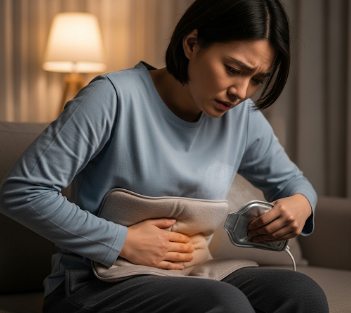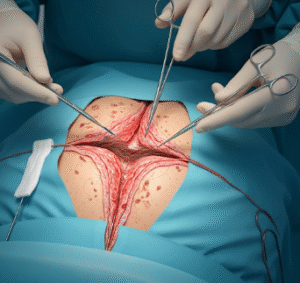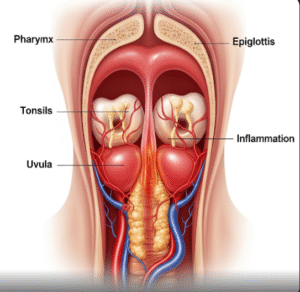Overview
Menorrhagia is a medical term for abnormally heavy or prolonged menstrual bleeding, often interfering with daily activities and quality of life. Women with menorrhagia may experience soaking through pads or tampons every hour, bleeding for more than seven days, or passing large blood clots.
While occasional heavy periods can be normal, persistent menorrhagia may indicate underlying gynecological or systemic issues. In Korea, treatment combines accurate diagnosis, medical therapy, and minimally invasive or surgical interventions to control bleeding and improve reproductive health.
Key Facts
➤ Menorrhagia is one of the most common gynecological complaints.
➤ Causes include hormonal imbalances, uterine abnormalities, systemic conditions, or medications.
➤ It can lead to iron deficiency anemia due to chronic blood loss.
➤ Early evaluation is important to prevent complications and address underlying causes.
➤ In Korea, treatments range from hormonal therapy and medical management to surgical options.
What is Menorrhagia?
Menorrhagia refers to menstrual bleeding that is abnormally heavy or prolonged, beyond the normal cycle.
➔ Normal menstrual bleeding ranges from 30–80 mL per cycle, lasting 3–7 days.
➔ Menorrhagia exceeds this amount, often causing fatigue, weakness, and disruption of daily activities.
➔ The condition may be primary (without identifiable cause) or secondary (due to medical conditions such as fibroids or hormonal disorders).
Symptoms Related to Menorrhagia
➤ Excessive bleeding during menstruation, requiring frequent pad or tampon changes.
➤ Passing large blood clots (bigger than a quarter).
➤ Menstrual periods lasting longer than seven days.
➤ Fatigue, dizziness, or weakness due to blood loss.
➤ Shortness of breath or paleness in severe cases.
➤ Disruption of daily activities, work, or school due to heavy bleeding.
Causes / Possible Causes
Menorrhagia can result from hormonal, structural, systemic, or medication-related factors:
Hormonal Causes
➤ Estrogen-progesterone imbalance, common in adolescence or perimenopause.
➤ Ovulation problems leading to irregular endometrial shedding.
Structural Causes
➤ Uterine fibroids or polyps.
➤ Adenomyosis – thickening of the uterine wall.
➤ Malformations or endometrial hyperplasia.
Medical and Systemic Causes
➤ Blood clotting disorders such as von Willebrand disease.
➤ Thyroid disorders affecting hormonal balance.
➤ Liver or kidney disease interfering with coagulation.
➤ Medications like anticoagulants or hormonal drugs.
Lifestyle or External Factors
➤ Severe stress affecting hormonal regulation.
➤ Rapid weight changes or nutritional deficiencies.
Risk Factors
➤ Age – teenagers and perimenopausal women.
➤ Obesity or hormonal imbalances.
➤ Family history of heavy menstrual bleeding or clotting disorders.
➤ Medical conditions like thyroid disorders, fibroids, or bleeding disorders.
➤ Use of certain medications affecting coagulation or hormone levels.
Complications
If left untreated, menorrhagia may lead to:
➤ Iron deficiency anemia, causing fatigue, paleness, and shortness of breath.
➤ Severe discomfort and disruption of daily life.
➤ Emotional and psychological impact, including stress and anxiety.
➤ Increased risk of uterine or reproductive complications if underlying causes are untreated.
When Should I See My Doctor?
Consult a healthcare provider if:
➤ Menstrual bleeding is excessively heavy or prolonged.
➤ You pass large blood clots frequently.
➤ Symptoms of anemia, such as fatigue, dizziness, or paleness, appear.
➤ Bleeding interferes with daily activities or work.
➤ Over-the-counter measures fail to control discomfort or bleeding.
Care and Treatment
Lifestyle and Home Measures
➤ Track menstrual cycles and bleeding patterns.
➤ Maintain iron-rich diet to prevent anemia.
➤ Use heat pads or pain relievers for associated cramps.
➤ Stay hydrated and rest adequately during heavy bleeding.
Medical Treatments
➤ Hormonal therapy – oral contraceptives, progesterone therapy, or hormonal IUDs.
➤ Non-hormonal medications – NSAIDs to reduce bleeding and pain.
➤ Iron supplementation for anemia caused by blood loss.
➤ Minimally invasive procedures – endometrial ablation, hysteroscopy, or fibroid removal.
➤ Surgery (hysterectomy) in severe, refractory cases.
Preventive Measures
➤ Regular gynecological checkups to detect fibroids, polyps, or hormonal disorders.
➤ Monitor menstrual cycles for early intervention.
➤ Lifestyle management – healthy weight, balanced diet, stress reduction.
Treatment Options in Korea
Korea offers advanced gynecological care for menorrhagia:
Diagnostic Services
➤ Blood tests for hormonal levels, complete blood count, and coagulation profile.
➤ Pelvic ultrasound or MRI to detect fibroids, polyps, or structural abnormalities.
➤ Endometrial biopsy if needed to rule out hyperplasia or malignancy.
Therapies and Supportive Care
➤ Hormonal therapy tailored to patient age, reproductive goals, and cause.
➤ Minimally invasive procedures such as hysteroscopic polyp removal or endometrial ablation.
➤ Iron supplementation and anemia management.
➤ Traditional Korean medicine options including herbal therapy and acupuncture.
➤ Multidisciplinary approach combining gynecology, hematology, and integrative medicine.
✅ In summary: Menorrhagia is heavy or prolonged menstrual bleeding that can impact health and quality of life. Causes include hormonal imbalances, uterine abnormalities, systemic disorders, or medications. In Korea, women benefit from accurate diagnosis, medical therapy, minimally invasive interventions, and integrative approaches to control bleeding, prevent complications, and maintain reproductive and overall health.













